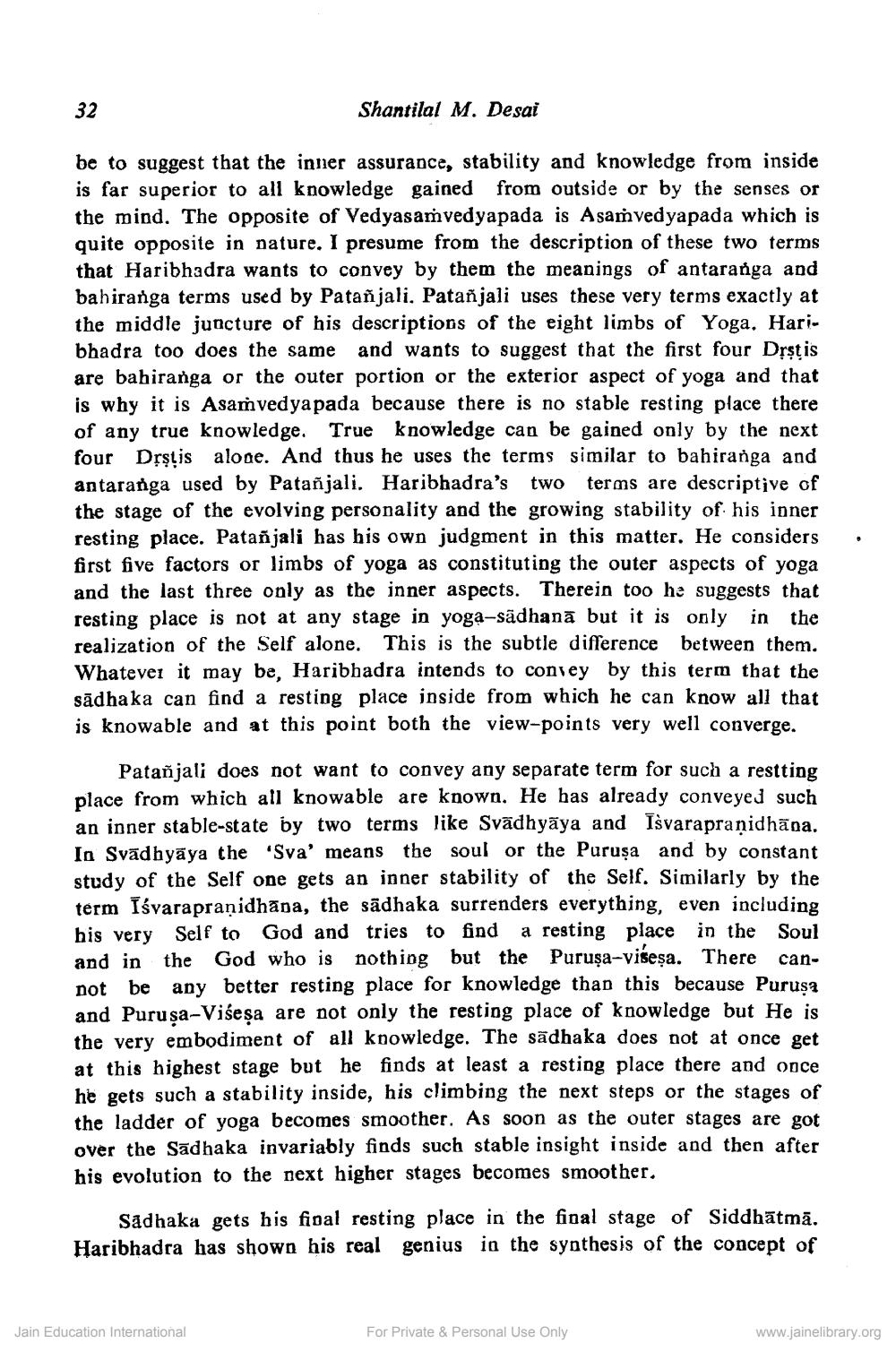________________
32
Shantilal M. Desai
be to suggest that the inner assurance, stability and knowledge from inside is far superior to all knowledge gained from outside or by the senses or the mind. The opposite of Vedyasamvedyapada is Asamvedyapada which is quite opposite in nature. I presume from the description of these two terms that Haribhadra wants to convey by them the meanings of antaranga and bahiranga terms used by Patanjali. Patañjali uses these very terms exactly at the middle juncture of his descriptions of the eight limbs of Yoga. Haribhadra too does the same and wants to suggest that the first four Dṛṣṭis are bahiranga or the outer portion or the exterior aspect of yoga and that is why it is Asamvedyapada because there is no stable resting place there of any true knowledge. True knowledge can be gained only by the next four Drṣtis alone. And thus he uses the terms similar to bahiranga and antaranga used by Patañjali. Haribhadra's two terms are descriptive of the stage of the evolving personality and the growing stability of his inner resting place. Patanjali has his own judgment in this matter. He considers first five factors or limbs of yoga as constituting the outer aspects of yoga and the last three only as the inner aspects. Therein too he suggests that resting place is not at any stage in yoga-sadhana but it is only in the realization of the Self alone. This is the subtle difference between them. Whatever it may be, Haribhadra intends to convey by this term that the sādhaka can find a resting place inside from which he can know all that is knowable and at this point both the view-points very well converge.
Patanjali does not want to convey any separate term for such a restting place from which all knowable are known. He has already conveyed such an inner stable-state by two terms like Svadhyaya and Isvarapraṇidhāna. In Svadhyaya the 'Sva' means the soul or the Puruşa and by constant study of the Self one gets an inner stability of the Self. Similarly by the term Isvarapraṇidhāna, the sadhaka surrenders everything, even including his very Self to God and tries to find a resting place in the Soul and in the God who is nothing but the Purusa-višesa. There cannot be any better resting place for knowledge than this because Purusa and Purușa-Viseșa are not only the resting place of knowledge but He is the very embodiment of all knowledge. The sadhaka does not at once get at this highest stage but he finds at least a resting place there and once he gets such a stability inside, his climbing the next steps or the stages of the ladder of yoga becomes smoother. As soon as the outer stages are got over the Sadhaka invariably finds such stable insight inside and then after his evolution to the next higher stages becomes smoother.
Sadhaka gets his final resting place in the final stage of Siddhātmā. Haribhadra has shown his real genius in the synthesis of the concept of
Jain Education International
For Private & Personal Use Only
www.jainelibrary.org




